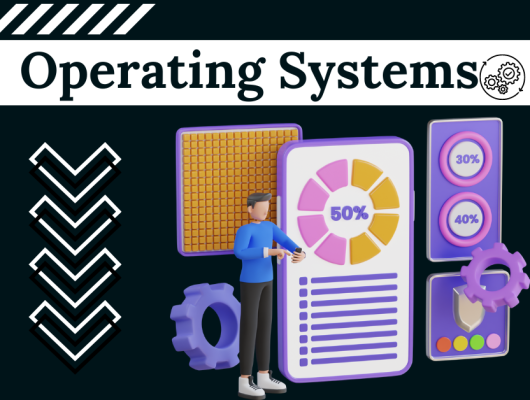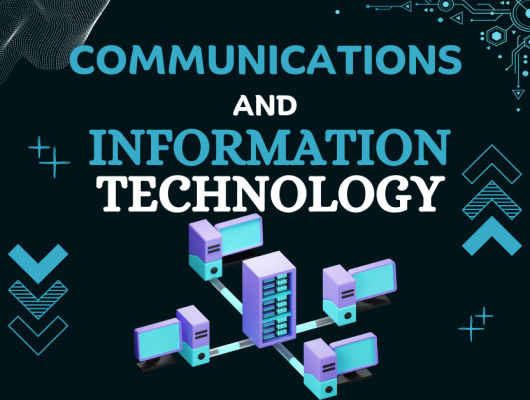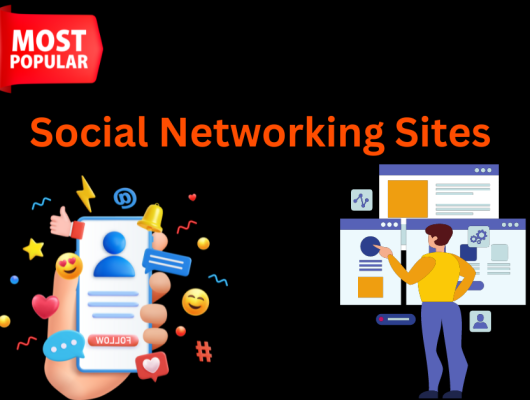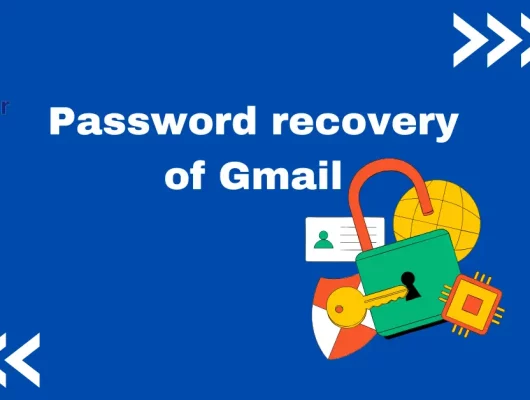Crafting an effective digital marketing strategy involves more than just creating content; it requires a focus on delivering quality content that adds value to your readers. Becoming a recognized thought leader and establishing your brand necessitates the production of exceptional content.
However, the true power lies not only in content creation but also in the strategic distribution of that content. Without a well-thought-out content distribution strategy, your efforts in content creation risk being futile, with your work going unnoticed by your target audience and your resources wasted.
Stay ahead in 2024 with a deep dive into content distribution strategies and the latest digital marketing trends for experts. Aligning these powerful tools maximizes visibility, engagement, and amplifies your brand’s influence in the dynamic online landscape.
Your content’s journey doesn’t end at creation; it’s where it establishes connections with your audience and drives meaningful relationships with your customers. This connection point is pivotal for real conversions to occur. A robust content distribution strategy, therefore, is not just about getting your content seen; it’s about getting it seen by the right people at the right time.
In 2024, recognizing the influence of content distribution in making your digital marketing endeavors fruitful is key to solidifying your brand’s presence and achieving tangible results.
Content Distribution Strategy: The What And Whys
In a sea of online content and fierce competition, crafting a successful content distribution strategy is the key to capturing the fleeting attention span of users. The goal is to be in front of the right people at the right time on the right channels. As of 2022, platforms like GrowthBadger offer insights into effective distribution methods.
Embrace the challenge posed by over 600 million blogs and 800 million videos; tailor your content to resonate with your target audience, and make your mark amid the one billion Stories on Meta and Facebook’s family of apps. This guide equips you with the essentials to achieve content distribution success in the ever-evolving online realm.
It Dramatically Increases Your Reach
Crafting a successful digital presence pivots on a pivotal cornerstone — a content distribution marketing strategy that is both well-designed and carefully implemented. This strategy serves as the linchpin, orchestrating the seamless dissemination of your diverse forms of content — be it compelling blogs, captivating videos, or engaging posts.
The goal is to ensure that your content is not only created but becomes readily available and accessible across a multitude of platforms and websites, empowering your target audience to effortlessly discover, enjoy, and eagerly share your digital narrative.
At the core of an impactful digital presence is a robust content distribution marketing strategy, a blueprint that transcends mere creation to actively shape how your various forms of content permeate the online landscape. From compelling blogs to visually arresting videos and thought-provoking posts, this strategy ensures that your content is seamlessly woven into the fabric of diverse platforms and websites.
The result is an expanded reach that enables your target audience to effortlessly discover, enjoy, and enthusiastically share the wealth of value you bring to the digital realm.
It Lets You Set Measurable Content Marketing Goals
To formulate an effective content distribution strategy for 2024, ensure a seamless connection between your content creation and publishing efforts, guiding them with a clear purpose and direction. The timely delivery of relevant content is pivotal for engaging your target audience and fulfilling your marketing goals.
Define concrete benchmarks and key performance indicators (KPIs) to systematically measure performance and achieve impactful results in the ever-evolving landscape of content distribution and development.
Types of Content You Can Distribute
When aiming to evaluate the effectiveness of content distribution, it’s crucial to consider a diverse range of content assets. Various formats cater to different audience preferences and engagement levels. Blog posts, white papers, and research studies are essential for in-depth insights, while pillar pages and long-reads serve as comprehensive resources.
Interactive formats like infographics, checklists, and ebooks are effective for user engagement. Additionally, videos and podcast episodes provide dynamic content experiences. To maximize reach, it’s essential to leverage different promotional channels strategically, ensuring a mix of newsletters and product landing pages for comprehensive content distribution.
When setting expectations and goals for content distribution, identifying key performance indicators (KPIs) is a crucial step. While brand awareness and shares contribute to visibility, monitoring organic traffic, keyword rankings, and backlinks are vital for SEO success. The rule of thumb is to pick content types wisely, aligning them with the intended outcomes. Whether it’s case studies, success stories, or how-to guides, understanding the target audience’s preferences helps tailor content for optimal impact.
By diversifying content across articles, non-blog posts, and other formats, a brand can achieve a more comprehensive and effective content distribution strategy.
Three Kinds of Distribution Channels To Focus On
Crafting a successful content strategy involves a deep understanding of your target audience and utilizing the right distribution channels and platforms. Start by choosing the most effective channels for your brand, considering popular media like social media and email marketing. Allocate resources wisely, balancing paid advertising with SEO efforts to drive organic traffic.
Leverage the power of influencer marketing to extend your reach. Implement a systematic approach to measuring success through analytics, and consider incorporating newsletters for direct engagement.
Owned Channels
Owned channels play a crucial role in amplifying a company’s online presence. These channels include blogs and landing pages on the company’s website, which serve as hubs for valuable information. Gated content on the blog encourages user engagement, while social media profiles extend the brand’s reach across various platforms.
Newsletters keep the audience informed, and mobile apps provide a convenient avenue for interaction. For example, a dog training website might utilize these channels to share training tips, showcase success stories, and promote exclusive content. Consistent use of these content platforms strengthens the brand’s digital footprint.
Earned or Shared Channels
Nike’s brand is elevated through strategic collaborations with bloggers, social media influencers, and journalists. By leveraging shared channels with these external third parties, Nike earns valuable mentions and reviews. Engaging with contemporary lifestyle magazines like Hypebeast allows for authentic guest posts and product reviews.
The brand’s content, posted for free on various platforms, fosters a community of enthusiasts who organically create their Shares. This approach exemplifies the power of collaboration, turning each interaction into a meaningful contribution to Nike’s overarching streetwear narrative.
Paid Channels
Leveraging various paid channels is essential when developing a robust content distribution strategy. This involves running paid ads on diverse platforms, employing pay-to-play models for increased visibility through sponsored content and social media ads. Collaborating with influencers and reviewers is another effective method, with brands compensating them to positively speak about their products.
A technology website like Apple Insider can serve as an example, where brands invest in sponsored articles to showcase their latest innovations. By targeting these external sites, companies ensure their paid content reaches a broader audience, extending beyond organic channels. Though there is a fee involved, the results often justify the investment in expanding the online presence of the brand.
How to Choose Between Content Distribution Channels
When wondering where to promote your content, several factors to consider are the use of paid channels and organic channels. Paid channels can generate results quickly, but they require ongoing investment to sustain growth. However, be prepared to turn off ad spend if there’s an immediate downturn. On the other hand, organic channels (owned and earned) take longer to see results but offer sustainable and stable growth.
Remember, building a loyal fanbase doesn’t happen overnight; it’s the best way to strike a healthy balance between paid and organic distribution channels. To simplify the process of choosing optimal channels, compare target KPIs and important metrics, keeping track of the results. Below, find detailed information on the types of content distributed through various channels.
Owned Content Distribution Channels
To enhance brand performance, regularly update and tweak content across various channels. Maintain control by focusing on owned platforms where you can easily remove or adjust copy. Utilize a strategic interlinking strategy to improve backlink profiles and communication with the owned audience. Nurture contacts through a well-designed funnel, ensuring effective tabs and channels to efficiently communicate and foster engagement.
Earned Content Distribution Channels
Becoming an influential thought leader in the competitive digital industry is undoubtedly worth the effort for any brand. Collaborating with a top media publisher can result in massive audience traction and access to a loyal, engaged community. However, the challenge lies in the limited control over the media channel, with the potential downside of outdated content. To address this, consistent content publishing, regular reviews, and proactive takedowns of underperforming material are essential. Managing multiple channels demands careful resource allocation for optimal impact. Despite these challenges, partnering with a reputable media entity remains a strategic move for long-term success in the industry.
Paid Content Distribution Channels
When planning a budget for a promotional campaign, consider diverse channels and ad formats to ensure a wider reach. Faced with the challenge of ROI forecasting, prioritize measurable results impacting the bottom line. Tailor content to different funnel stages, from engaging blogs to targeted paid ads, ensuring a seamless fit for diverse audiences. The power of optimizing for organic traffic should not be underestimated in generating valuable leads throughout the campaign.
Building a Winning Content Distribution Strategy in 10 Steps
Step #1: Effective Content Distribution Strategy in Action
To establish an impactful content distribution strategy, consider your goals and identify the target audience. Choose channels and platforms aligned with audience preferences, leveraging social media, email marketing, and SEO. Incorporate analytics to measure success and adjust strategies for optimal results. This approach enhances content reach, visibility, and engagement across diverse online channels.
Step #2: Maximizing Digital Marketing with a Full-Service Agency
A full-service digital marketing agency, acting as a content marketing consultant, optimizes digital efforts. The agency’s task is to create and implement an effective content distribution strategy. By tailoring content to resonate with the audience on various channels, utilizing email marketing, SEO, and social media, the agency increases visibility and engagement. Ongoing measurement through analytics ensures adaptive strategies for sustained performance.
Step #3: Research Your Target Audience
Understanding Your Audience’s Preferences:
- Front align your content: Ensure your content is visually appealing and easy to consume by aligning it front and center.
- Ask questions: Engage your audience by asking questions that tap into their behaviors and preferences.
- Pro Tip: Tailor your promotional efforts to align with the found preferences, creating a more targeted approach.
- Build trust: Consistently seek and incorporate the audience’s opinion to build trust and strengthen your product’s benefits.
Optimizing Product Distribution:
- Benefit alignment: Align your product with the identified preferences to highlight its specific benefits that resonate with the audience.
- Pro Tip: Leverage distribution channels that match your audience’s behaviors and where they commonly consume content.
- Tailored promotional efforts: Customize promotional strategies to fit the preferred channels, maximizing the impact of your distribution.
Step #4: Research the platform where your audience is active
To create an effective Content Distribution Strategy for a B2B SaaS Company, start by identifying your target audience and engaging with them in SaaS Communities like GrowthHackers and Slack Channels. Participate in Relevant Communities on platforms such as Web, Quora, and Reddit, addressing questions related to your product and using the keyword “marketing.” Leverage the power of Search to discover additional platforms and insights. Consider Marketing on Reddit to tap into niche audiences. Share valuable content in WhatsApp, Facebook, and Stack Overflow groups to extend your reach. Tailor your recommendations to fit each platform and maximize the impact of your distribution channels.
Step #5: See What Content You Can Distribute First
Developing an effective Content Distribution Strategy involves several key steps to maximize the potential and achieve optimal results. Begin with a comprehensive content audit of existing content using tools like Google Analytics and Salesforce to analyze historical performance. Identify high-value pieces and the most effective channels and content types from the past.
Collaborate with the management team to create an editorial calendar aligned with external deadlines and requirements. Distinguish between earned distribution channels and paid distribution channels, selecting target channels based on past performance. Ensure everyone is on the same page by incorporating the plan as an integral part of the overall content creation and distribution process.
A Pro Tip: have a repository of assets readily available to streamline the distribution process, saving time and ensuring that promising content is at your fingertips when making distribution decisions.
Step #6: Select Your Media Channels
When deciding on a distribution channel for your marketing meme campaign, it’s crucial to conduct thorough audience research. Assessing the historical performance of different channels can provide a clearer picture of their effectiveness. Use tools like Semrush Traffic Analytics to analyze your competitor’s key channels and gather insights into their estimated monthly traffic, audience demographics, and sources.
This information will help you make informed decisions on which channels have the potential to perform well for your campaign.
To ensure quick results, consider using a paid campaign on platforms like LinkedIn, Facebook, Instagram, or Twitter. Simultaneously, leverage organic methods by sharing your piece of content like an ebook across these channels at different times to maximize visibility. Track the engagement, downloads, and website traffic generated by both paid and organic efforts to track performance.
This dual approach not only addresses the challenges of reaching a broader audience but also allows for a comprehensive analysis of the cost-effectiveness of each channel. When the campaign ends, you’ll have a comprehensive understanding of how each channel contributed to the overall success.
Step #7: Increase Your Earned Media Generation Efforts
Earned media is a powerful tool for businesses, increasing brand awareness and boosting credibility. It provides unbiased and authentic information, essential in building a strong brand image. While it can be challenging, the advantages are well worth it. To harness its potential, businesses should invest time and effort in generating earned media.
Sharing value-adding content in various ways, such as through Meta groups, forum websites like Reddit, and guest-posting on other blogs, can be effective. Stepping up review generation efforts and encouraging followers to create user-generated content (UGC) also play crucial roles. Collaborating with a full-service digital marketing agency can aid in developing sharable, potentially viral content that expands reach and builds company’s thought leadership.
One of the most effective ways to generate earned media is by actively participating in industry discussions. Joining and engaging in Meta groups, forum websites like Reddit, and contributing through guest-posting on other blogs can lead to increased brand awareness. Additionally, businesses can enhance their efforts by stepping up review generation, encouraging followers to create user-generated content (UGC), and organizing promotions and contests.
Collaborating with a full-service digital marketing agency is advantageous in developing strategies for creating and sharing value-adding content, ultimately benefiting from the expansion of reach and boost in credibility that earned media brings.
Step #8: Invest in Paid Content Distribution Channels
Content marketing consultants play a crucial role in maximizing the ROI of a business’s online presence. Leveraging platforms like Twitter, Google, and Meta (formerly Facebook), these experts understand the importance of utilizing both paid distribution channels and earned channels. By strategically deploying native ads on these platforms, they drive targeted visits and ensure high engagement levels, leading to increased conversions.
Recognizing that time is of the essence, a trusted content distribution company can get the job done faster than attempting to manage these time-consuming and challenging tasks in-house.
Crafting a successful content distribution strategy involves a blend of owned channels and the use of paid media. Savvy content marketing consultants collaborate with specialized content distribution companies to navigate the complexities of the digital landscape. This collaboration ensures that the business’s message reaches the right audience, yielding measurable results.
The expertise of these consultants lies in choosing the most effective paid content distribution route for a brand, allowing them to streamline the process and achieve optimal results in a shorter time frame.
Step #9: Adjust Your Promotional Message
Victoria’s Secret, the esteemed lingerie company, navigated the dynamic post-pandemic media landscape with a strategic shift in its brand portrayal. Recognizing the need to move beyond potentially hurtful stereotypes, the brand introduced the “What Women Want” campaign, aiming to prioritize the diverse needs of its target audience and project a body-positive image.
Utilizing new media platforms like Spotify, Apple Podcasts, Google Play Store, and iHeart Radio, the company effectively communicated its message by engaging brand ambassadors and focusing on powerful podcast content topics that aligned with platform requirements and editorial guidelines.
To ensure the success of this approach, Victoria’s Secret adopted a strategic distribution strategy across earned and paid channels. Leveraging the podcast as a third-party channel, the brand reached its target audience and addressed their needs while maintaining a positive and consistent tone of voice. Proactively tackling societal issues and challenges faced by modern women, the brand’s promotional message transformed into a collective voice for change.
The key to success lay in neglecting neither earned nor paid channels, distributing diverse content pieces on the same topic simultaneously, creating a brand narrative that resonated with a broader, more diverse audience.
Step #10: Measure Your Performance
To boost your content distribution strategy, it’s crucial to gather analytics data from various sources. Utilize tools like Google Analytics, Google Search Console, and native analytics on social media platforms. Collect data on changing channels and performance tracking through UTMs and Urchin Traffic Monitor codes.
This information will guide you in making informed decisions for repurposing high-performing assets. When setting up earned and paid distribution channels, a Pro Tip is to look for easier ways to create and measure impact. This comprehensive approach ensures a dynamic and effective content strategy.
Top Content Distribution Tools and Platforms
Digital marketers today face the challenge of choosing between owned platforms and paid platforms for content distribution. The importance of this choice lies in efficiently allocating efforts and resources to promote content. With growing needs for automation in marketing, it’s crucial to measure the performance of each channel.
In this short overview, it becomes evident that making the right choice is essential for adapting to the easily evolving landscape of digital marketing.
Owned Distribution Platforms
Facebook:
- Facebook is the biggest social networking site with nearly 3B monthly active users.
- Brands can leverage the platform for both organic and paid content promotion.
- Utilize features like Reels, Stories, and standard posts to engage a diverse audience.
Instagram:
- Instagram, owned by Meta, is a photo-based social media platform.
- Businesses can post a variety of photos, Stories, and video content for both organic and paid promotion.
- Leverage the visual appeal of Instagram to effectively connect with your target audience.
Twitter:
- Twitter is a micro-blogging site with a character limit of 280 characters per post.
- Widely used by brands of all sizes and industries to connect and engage audiences through both organic and paid options.
LinkedIn:
- LinkedIn is a social channel primarily used by businesses and professionals.
- Brands can post videos, photos, blogs, and other content for organic and paid promotions.
- Content on LinkedIn tends to be educational and informative, catering to a professional audience.
Google Business Profile:
- Google Business Profile is a free tool that lets businesses control how they appear on Google Search and Google Maps.
- Businesses can post blogs, special offers, events, and details to promote business.
- It’s crucial to monitor and respond to reviews to build a positive reputation within the local community.
Earned Distribution Platforms
Medium:
- Engage with a broad audience on Medium through well-crafted articles.
- Connect with readers who are actively seeking valuable content.
- Share insights and establish brand awareness within the Medium community.
HARO (Help a Reporter Out):
- Leverage HARO to connect with a diverse range of journalists and bloggers.
- Position yourself as an expert by providing valuable insights to online platforms.
- Become a go-to source for expert data on relevant topics.
Prowly:
- Elevate your PR and Media Relations with Prowly’s powerful tools.
- Efficiently manage your media contacts and streamline PR activities.
- Send personalized emails and create a journalist-friendly newsroom for impactful press releases.
GaggleAMP:
- Amplify your reach with GaggleAMP’s social advocacy platform.
- Empower loyal employees and customers to distribute content across their social media accounts.
- Ensure content is shared with consent, maximizing your social media impact.
Disqus:
- Foster discussions on your web platform using Disqus, a networked comment system.
- Engage visitors in conversations related to your goods and services.
- Enhance user experience by encouraging dialogue on topics closely related to your content.
Quora:
- Utilize Quora as a valuable social question-and-answer resource.
- Learn from and engage with the community on any topic.
- Position your brand as a go-to source by providing thoughtful solutions to any problem.
Paid Distribution Platforms
PR Newswire is a renowned international portal that specializes in press release distribution, ensuring your content reaches global media as well as local media outlets. Leveraging platforms like Outbrain, a leading recommendation platform, helps promote your content through strategically placed native ads on some of the largest publisher sites such as CNN and TIME.
Crafting an effective content distribution strategy involves tailoring your approach to various distribution channels based on your target audience and goals. Utilize diverse platforms and channels including social media, blogs, email newsletters, and your website to ensure broad reach. To measure success, employ robust analytics to track engagement and continually refine and improve your strategy. This iterative process will help you maximize the impact of your content and effectively connect with your audience.
Performance Measurement Tools
Semrush ImpactHero uses AI to measure the contribution of your website’s pages towards lead conversion. It can collect and analyze data from custom events on your website, providing valuable insights into user interactions.
With Post Tracking, you can easily get information on referral traffic, backlinks, and shares for articles distributed across various channels. It helps you understand the estimated reach of your content and assists in identifying the effectiveness of earned and paid channels by contacting the respective channel’s owner.
Social Media Analytics allows you to keep track of metrics such as total page likes, new page likes, and fans across popular platforms like LinkedIn, Facebook, and Instagram, including Instagram Business profiles. This enables you to stay informed about your online presence and audience engagement on social media.
Distribute Your Content Wisely To Promote Growth
Content Distribution Strategy:
Developing an effective content distribution strategy is crucial in today’s digital landscape. There’s no-size-fits-all technique for success, so it’s vital to tailor your approach. To avoid waste of money and effort, ensure your content is heading in the right direction.
Expand Channels:
To unlock the full potential of your brand, expand your distribution channels. Don’t limit yourself; explore various platforms to reach diverse audiences. This not only builds your brand but also establishes long-term brand loyalty.
Embrace Automation:
Save time and boost efficiency by embracing automation in your distribution process. It allows you to publish content consistently and frees up space for creativity. Automation makes it easy to find the right audience for your content.
Optimize for Readability:
Make your content easy to find and read by optimizing it for readability. Incorporate incredible ideas to capture attention, ensuring your content remains unseen in a crowded digital space.
Final Tips:
In conclusion, a successful content distribution strategy involves a combination of creativity, automation, and optimization. By embracing diverse channels and tailoring your approach, you can maximize the potential of your content, building not just an audience but also long-term brand loyalty.
Questions Related To Content Distribution Strategies
What are content distribution strategies?
Content distribution strategy is a broad term that may encompass many different methods of distributing your content. There are three main types of content distribution: paid, owned, and earned. Paid reach: This is when you pay to draw attention to your content, via paid ads or promotions.
What is a distribution strategy example?
Example of an Intensive Product Distribution Strategy: Coca-Cola, a global brand with wide appeal, uses many intermediary partners to distribute its products. By partnering with grocery stores, gas stations, restaurants, movie theaters, online ecommerce platforms, and more.
What is the meaning of content distribution?
Content distribution is the process of promoting your content to your audience in a variety of formats across multiple channels and media platforms. Content distribution falls into three categories: owned, earned, and paid distribution.
What are the three types of content distribution?
Content distribution is the process of promoting and sharing content, like blog posts, videos, or social media updates, to reach a wider audience through various channels and platforms. There are three main types of content distribution channels: owned, earned, and paid.
What is an example of a content strategy?
A common content strategy example is implementing blog design and hub best practices. Blog optimization is important so more people can find your site and boost overall traffic. It’s also a great way to map out development ideas to improve the user experience.







